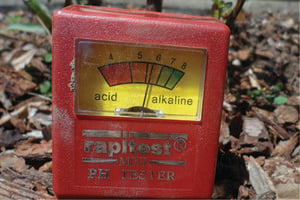
Soil test may refer to one or more of a wide variety of soil analysis conducted for one of several possible reasons. Possibly the most widely conducted soil tests are those done to estimate the plant-available concentrations of plant nutrients, in order to determine fertilizer recommendations in agriculture.
A soil test is important for several reasons: to optimize crop production, to protect the environment from contamination by runoff and leaching of excess fertilizers, to aid in the diagnosis of plant culture problems, to improve the nutritional balance of the growing media and to save money and conserve energy by applying only the amount of fertilizer needed.
Pre- plant media analyses provide an indication of potential nutrient deficiencies, pH imbalance or excess soluble salts. This is particularly important for growers who mix their own media. Media testing during the growing season is an important tool for managing crop nutrition and soluble salts levels. To use this tool effectively, you must know how to take a media sample to send for analysis or for in-house testing, and be able to interpret media test results.
What are common soil test methods?
It is determined by several methods and they are:
- Oven drying method.
- Calcium carbide method.
- Torsion balance method.
- Pycnometer method.
- Sand bath method.
- Radiation method.
- Alcohol method.


